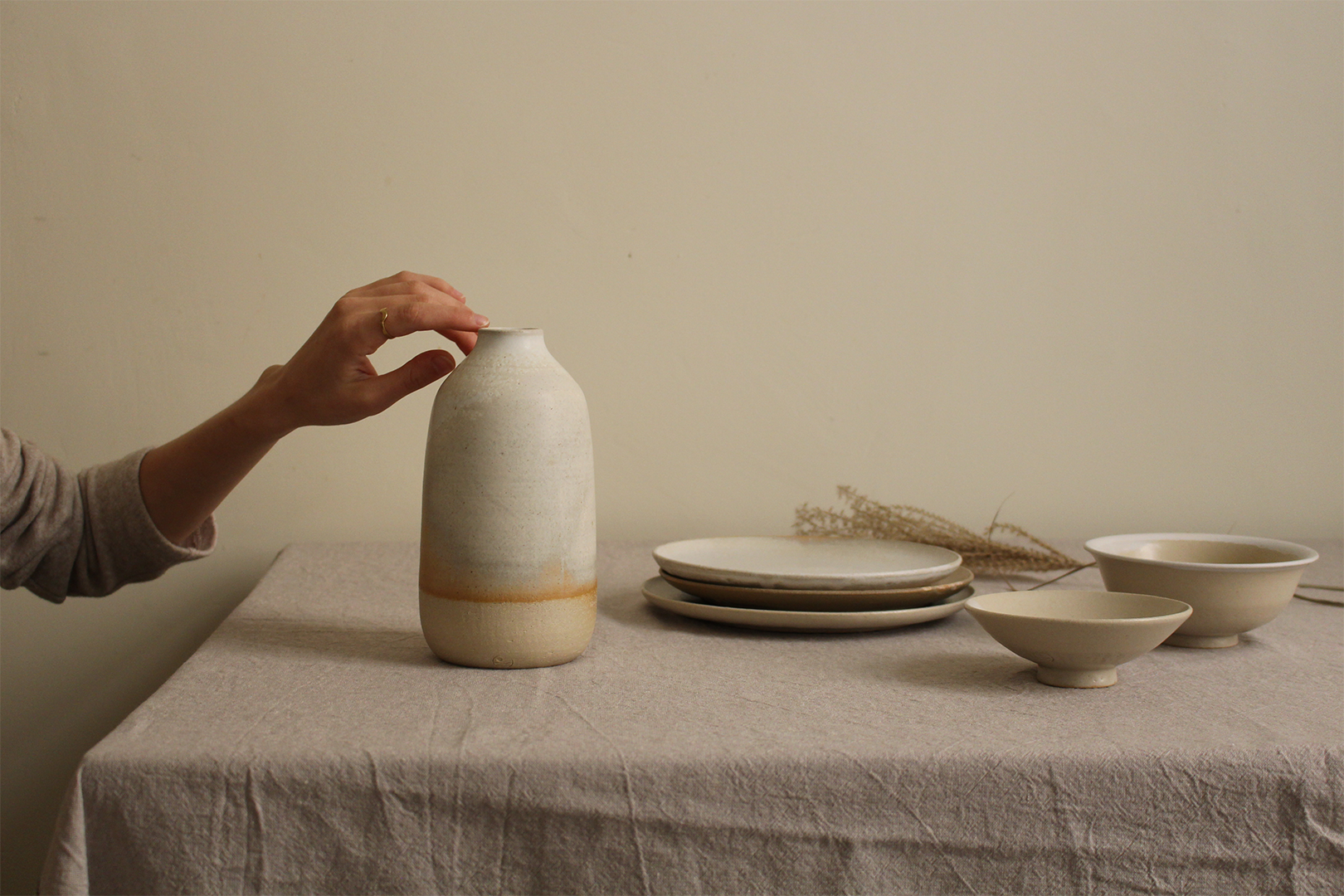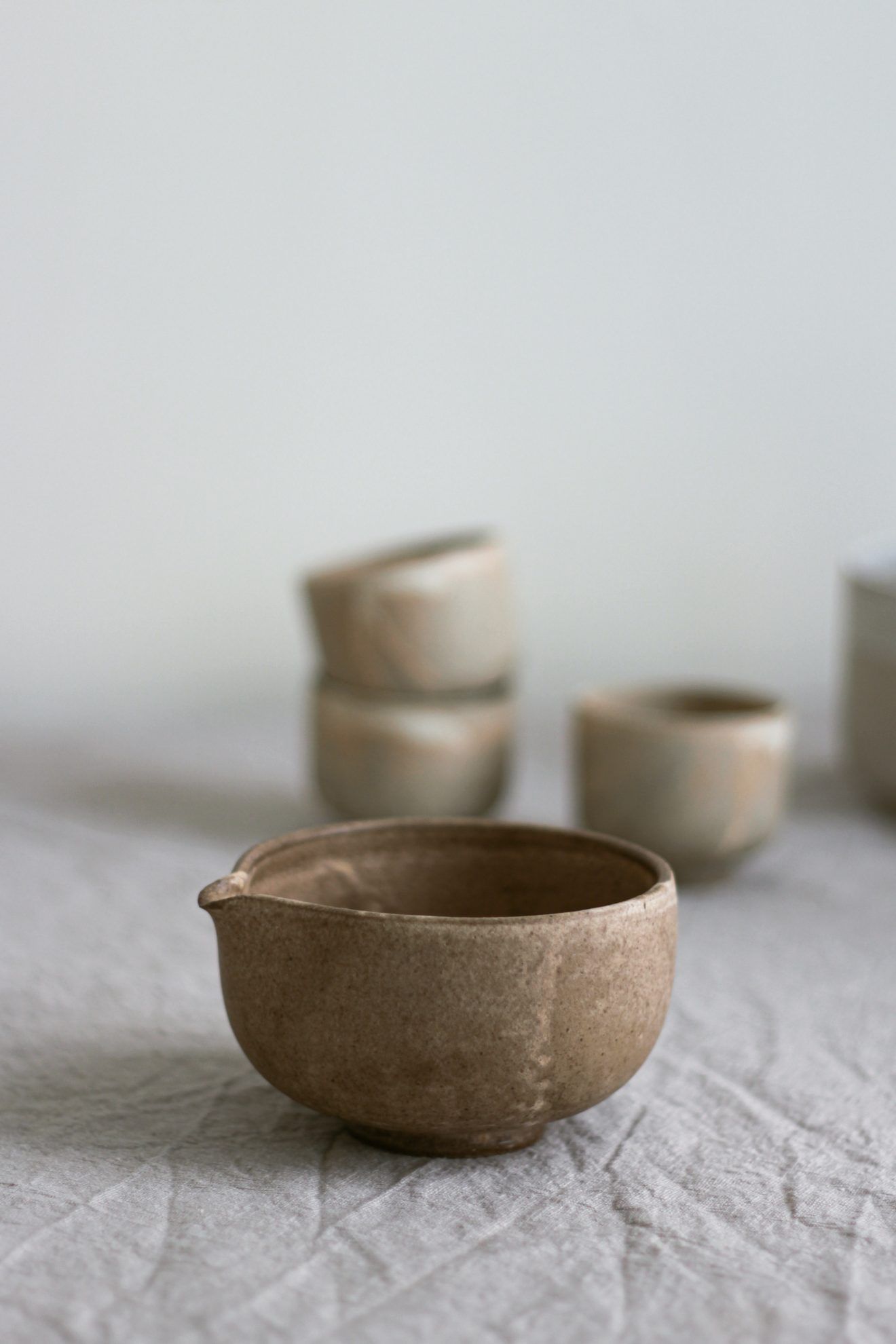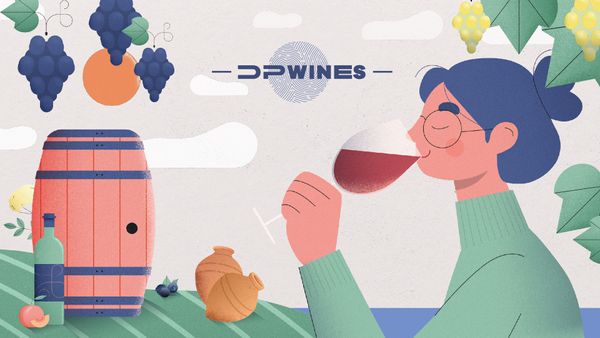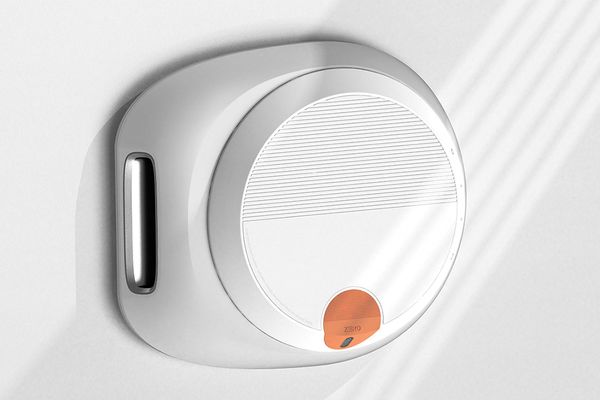With their handcrafted ceramics Mateusz Pascal Łotocki and Elka Kosek are taking us to the Far East. They fell in love with each other and with traditional Japanese design culture: their pastel colored porcelains gave place to minimalistic and meditative stoneware. Tranquil contemplation appears in both their objects and brand name, as the Japanese word ’nami’ means waves.
How and when did Nami studio start – could you share your story with us? How did you two meet?
Pascal: I graduated from the Art University in Poznan in 2015. My design diploma consisted of handmade porcelain lampshades. I already knew that after university I wanted to open my own ceramic studio and pursue this path of craftmanship and wheel thrown ceramics.
Elka: And this is when we met. I was collecting Polish vintage ceramics, so when I heard that a ceramic studio was opening near my home, I got really excited. I always wanted to make pottery. I visited Pascal in his studio and eventually we started dating.

Pascal: Back then I was making ceramics under a brand named Lush Market. We made wheel thrown porcelain everyday objects in pastel colors. Elka was helping me in the studio. We were both evolving as artists and craftsmen. We started using different clays, stepped away from colorful porcelain to stoneware and minimalistic glazes. In 2018 our ceramics didn’t look like initial Lush Market designs at all. We decided to close this project and start a new brand. This is how Nami Studio was established.
Your brand is not exactly a typical Polish brand: you are designing and making ceramics & graphics in Japanese style. The name ’nami’ means ’wave’ in Japanese. Where does this affiliation come from?
Pascal: Traditional Japanese ceramics is a great inspiration to us. It started with anime and manga, then it grew into a fascination with Japanese literature and essays, and finally shifted towards the Japanese kitchen and various traditions. We especially liked that every dish has a purpose and function. This is something that we want to manifest in our ceramics. Our designs are simple, minimalistic, but first of all functional. The real beauty of it comes from the fact that you are using it every day. And the details of course: everything we make is handmade and we spend a lot of time to make sure it has the right proportions, it lays good in hand and so on.

Nami means wave. This is something that describes our work flow. Our designs change over time. They are constantly evolving and bettering with our craftmanship. The designs are coming back each time slightly different, like a wave.
What kind of objects do you make and what techniques do you use? I am also fascinated by suminagashi graphics – could you tell us a little bit more about this ancient Japanese technique?
Elka: We make functional ceramics like cups, plates and bowls. The designs are highly inspired by the Japanese kitchen and traditions, so there are ramen bowls, small bowls for rice and side dishes as well as small pots for soy sauce. We also make tea ware, so you can find various dishes for tea brewing in our store, like shiboridashis, gaiwans and matchawans.

We also work with florists: we make vases, flower arranging bowls and ikebana dishes. As we said before, everything is handmade. Our main technique is pottery wheel. We also make dishes with kurinuki technique, sometimes vases and platters are hand-built. It depends on the style we are going for with the design.
Pascal: Suminagashi is an old Japanese graphic technique in which you put patterns of ink on water and then you carefully transfer the patterns by sinking paper into the water. It literally means „floating ink”. What we did with suminagashi is we took those basics and adjusted them to our modern needs. We use different pigments than those used in the traditional method, so we can print suminagashi graphics on many different surfaces including plywood, glass and plastic, not only paper.

You are working in Poznan. Could you introduce your workshop to our readers?
Pascal: Our studio is located on Święty Marcin, the main street of Poznan’s Old Town. Visitors are always welcome: you can come, see how we work and purchase our goodies. We believe that ceramics is supposed to be experienced through all senses, so we encourage visitors to hold, touch and feel the products. Not only to see it.

Elka: Our studio is not only our workspace and showroom, we also use this space and our experience for teaching people pottery. People come to us to learn, make something special with their hands but also for the therapeutic benefits of pottery. Our students often tell us that working with clay helps them reduce stress after a long day.
Do you make ceramics only for customers or do you have any special orders from cafes, restaurants or other places?
Pascal: We work with cafes(Happa to Mame, Kahawa), restaurants and florists florists (Korzenie, Śródlesie, Pracownia zieleni). We are always excited for their special requests, because most of the time they offer a challenge. First to design something new and out of our comfort zone and make it work with our visual dictionary, and second, to make it in a series. And if you are interested and you feel like we could make something special for you, feel free to reach out. This is how many amazing projects started that now are in our catalogue.
Nami studio | Web | Facebook | Instagram

„Hungarian wine is important to all of us” | dpwines

Smart sanitization, not only for your hands










